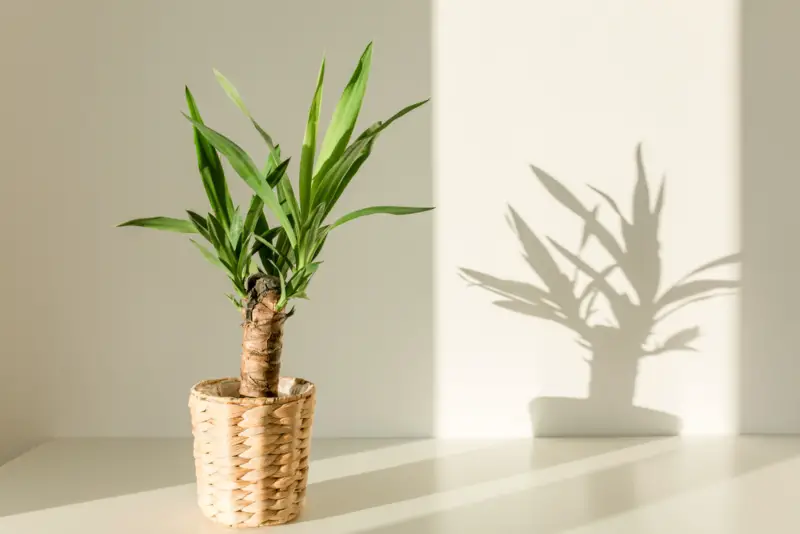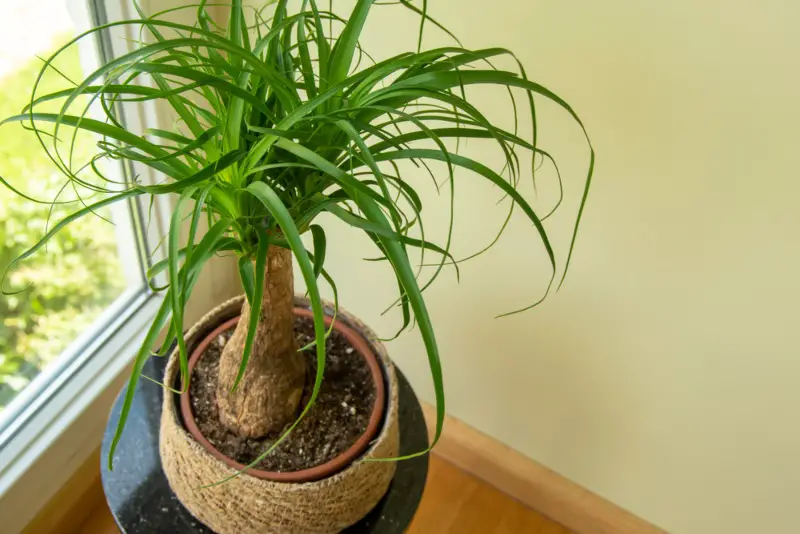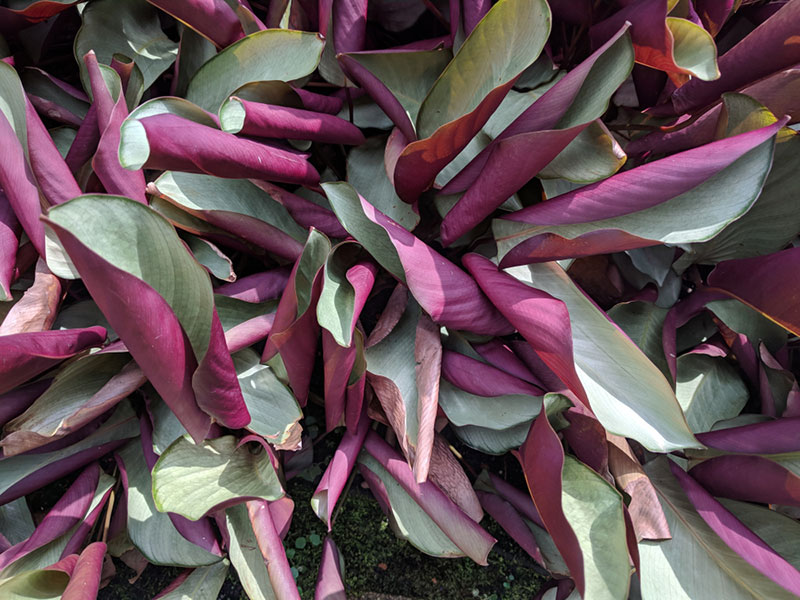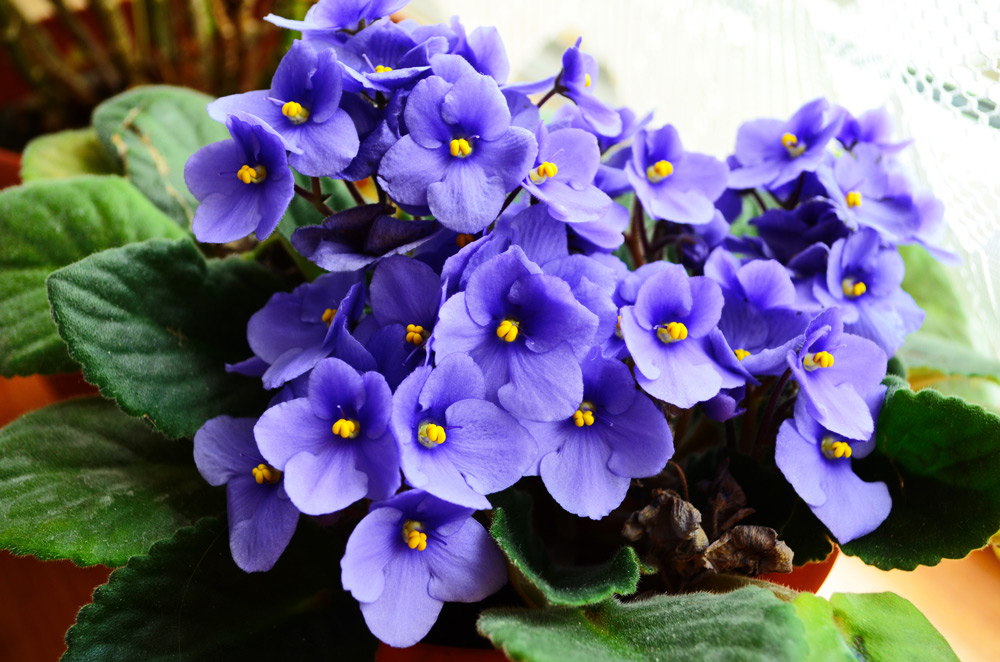
The benefits of having house plants include a free humidifier, something to take care of without the noise, and a natural flow to your home.
Since plants made their famous debut inside family homes, palm trees have become increasingly popular.
Palm trees make the perfect house plants because they provide shade and aesthetics to your space.
So if you’re ready to give your place a makeover, start with a few lovely indoor palm trees!
Sago Palm (Cycus Revoluta)

These palm trees predate humans and are one of the more primitive palm plants out there.
The Sago Palm has stiff, narrow fronds.
To keep your Sago Palm bold and beautiful, you’ll need to keep the soil dry. Yellowing leaves are a sign of overwatering.
This indoor palm tree needs bright light every day, and indirect sunlight. This plant would do best near a lamp or large window, as it thrives at 70-degree temperature.
They’ll need a cactus potting mix to grow and can steadily reach up to 6ft in height. Fertilize regularly from March to November.
Aside from their alluring display, Sago Palm seeds are poisonous to humans and pets.
Yucca Palm (Yucca elephantipes)

These palm trees have proud, large upright fronds and a skinny branch similar to sugar canes. There are several varieties of Yuccas that can produce fruit as well.
They require little water to flourish but would benefit greatly from occasional misting. You’ll also want to position your Yucca Palm away from direct sunlight, as too much sun can burn the leaves.
Fertilize Yuccas once a month from March to August and watch it grow up to 10ft high.
Yuccas are also one of the more tropical palms and thrive best in 75-degree temperatures.
Ponytail Palm (Beaucarnea recurvata)

This particular houseplant isn’t a palm tree, it’s a member of the agave family. But its beautiful palm-like structure has rightfully earned its place on the list.
Ponytail palms are adaptable to low light conditions and thrive in shaded areas. They grow up to 8ft in height and only need to be fertilized once in the spring and summer.
Ponytail palm trees enjoy dry, humid environments; so you’ll want to keep this plant in an 80-degree temperature room if possible. You’ll also only want to water it when the soil is completely dry.
To keep up the appearance, clip off dark ends.
Kentia Palm (Howea forsteriana)

These palm trees make the perfect statement piece for a child’s bedroom. Its short, thin leaves and roots make it the safest indoor palm tree.
Kentia Palm thrives most when given indirect sunlight, or when placed near indoor light. This ensures your palm will grow its anticipated 5-10ft.
You should mist your Kentia Palm several times a week to keep it looking refreshed, while only watering it when the top 3 inches are dry. A great tip to check if your Kentia Palm needs water is by sticking your finger into the soil and if the tip is still dry, your Kentia is thirsty.
Any potting mix with good drainage will suit the Kentia Palm, and you’ll only need to fertilize once a month.
Banana Palm (Musa Oriana)

These palm trees make a great addition to any beach house or condo on the water. This is because these bright and big leaves will need plenty of space to show off their allure.
Banana palms thrive in high humidity conditions– temperature ranging from 78-82 degrees is best. They prefer lots of sun, so it’s best to leave this plant near a large balcony window or somewhere it can get direct sunlight.
Banana palms need to be fertilized weekly throughout the spring and summer and misted weekly throughout the year.
These palm trees only need to be watered when the top 50% is dry, and at full fruition, these babies can grow up to 10ft indoors. Because they get so large, you must re-pot your banana palm once a year.
Majesty Palm (Ravenea Rivularis)

Another great big indoor palm tree is the Majesty Palm. It gets its name from its leave’s epic display.
Majesty Palms can adapt to low temperatures, but grow steady in 65-80 degree temperatures. You’ll want to mist your Majesty Palm weekly to keep its alluring display, otherwise, the fronds begin to droop.
Majesty Palms also thrive with minimal light, so position the palm tree away from direct sunlight.
Fertilize once a month from March to August and it will grow up to 10ft.
Ruffled Palm (Licuala Grandis)

These visually appealing palm trees are the perfect indoor houseplant for bedrooms. They thrive most in areas with partial to complete shade, which makes them the perfect centerpiece.
Any regular potting mix will suffice the Ruffled Palm, but when the surface of the potting mix dries the Ruffled Palm is thirsty.
This indoor palm tree needs to be fertilized 2 to 3 times from March to August and will grow up to 6ft in height. Its leaves can span a 22-inch diameter so although it’s not tall, it’s still quite bulky.
The Ruffled Palm leaves are sharp and homes with small children might want to reconsider that one.
Chinese Fan Palm (Livistona Chinensis)

The Chinese Fan Palm resembles the Kentia Palm the way its long narrow leaves drape dramatically from its root.
Chinese Fan Palms make great indoor palm trees but they can be high maintenance.
For starters, you’ll need to water the Chinese Fan Palm with distilled or filtered water. You’ll also need to position your plant near a bright lamp, turning it a quarter every so often for even growth.
You’ll also need specific soil for this palm tree, so mix 2 parts potting mix with 1 part sharp sand for the best results. Fertilize this palm tree once in the spring and once in the summer.
At full fruition, these palm trees can grow up to 10ft indoors.
Areca Palm (Chrysalidocarpus lutescens)

These palm trees make a great addition to any bathroom because they don’t grow very large, or wide, and require a moist environment to thrive.
Bathrooms make the perfect place for Areca Palms because of the moist environment, but you can also place your Areca Palm anywhere in well-drained soil. Water regularly.
Bathrooms are also a good place for Areca Palm trees because bathrooms tend to have small windows that would be perfect for giving your plant indirect sunlight.
You must regularly fertilize your Areca Palm in the spring to early fall. Don’t fertilize your Areca palm in the winter.
Parlor Palm (Chamaedorea Elegans)

The last indoor palm tree is the Parlor Palm, a small fern-like palm tree that fits well on countertops.
This miniature palm tree will only see 6ft in height at its best and performs best near a bright lamp. This plant would be great if you’re looking to decorate your bathroom or laundry room.
Parlor Palms require peaty soil-based potting mix and must be watered sparingly.
These palm trees rarely bloom indoors, but when they do it’s in the spring. At this time, the plant produces the cutest yellow offspring.













